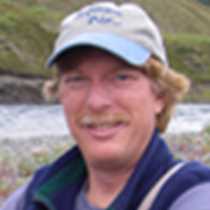Tracy Arm
When President Jimmy Carter signed the Alaska National Interest Lands Conservation Act of 1980, he forever protected the spectacular glaciated fjord system of Tracy Arm as one of a dozen federally designated wilderness areas in Southeast Alaska. All totaled, 5.4 million acres of the Tongass National Forest were protected by the Alaska Lands Act with Tracy Arm-Ford’s Terror Wilderness accounting for about 165,000 acres.
We motored into Tracy Arm in the early morning hours, so many of us awoke to the steep glaciated fjord walls outside our cabin windows. The rocks of these fjord walls were created over 250 million years ago when the heat and pressure deep inside the earth’s crust cooked sedimentary and igneous deposits into the metamorphic base-rock, called gneiss, that we see today. Much more recently, glaciers carved their way deep into that base rock. The first order of the day was to get up close and personal with these spectacular fjord walls in our kayaks. Of course, getting to those walls required navigating through a sea of icebergs courtesy of both south and north Sawyer glaciers.
Tracy Arm is all about glaciers; the glaciers that carved the fjords and the glaciers that are still calving tons of ice into the marine waters in front of both south and north Sawyer glaciers every day. Our morning kayak adventures were followed by afternoon Zodiac rides to the face of South Sawyer Glacier. While our patience was rewarded with a few spectacular calving events, the most exciting part of the Zodiac trips was the wildlife.
While we were sitting quietly in the ice waiting for the glacier to calve, harbor seals would check us out. These icy waters in front of South Sawyer Glacier are a nursery for seal moms that come from all over the northern part of Southeast Alaska each year to have their pups. Pups are born in May/June and spend most of the summer lounging and nursing on icebergs. Ice-clogged waters like Tracy Arm are a favorite for harbor seals because it keeps them safe from their primary predator Killer Whales, or Orcas, that don’t navigate well in the heavy ice found at the face of glaciers.
The big wildlife sighting of the day was a wolverine. Naturalist Dave Stephens and his Zodiac were motoring alongside the south wall of the fjord and were rewarded with great views of one of the most elusive mammals in all of Alaska. Pound for pound, wolverines are the most ferocious carnivores in North America and to see one is a once-in-a lifetime experience.
Lifetime experiences are what Lindblad/National Geographic trips are about, as the bears and whales, glaciers and forests that we’ve seen and touched here in Southeast Alaska will be with us forever.




